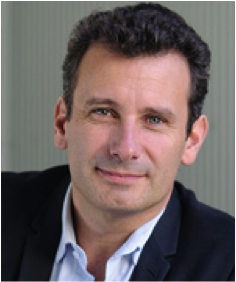| Title | Ultrafast Ultrasound Imaging : Basic Principles and Applications
|
| Instructor(s) and Affiliation |  Mickael TANTER Mickael TANTER |
| Short biography of instructor(s) | Mickaël Tanter
Research Professor of the French National Institute for Health and Medical Medical Research, Institute Langevin, ESPCI, Paris France Mickaël Tanter is the director of Inserm U979 “Wave Physics for Medicine” Lab and Deputy Director of Langevin Institute at ESPCI, Paris, France. He is a world renowned expert in biomedical ultrasound and wave physics. He co-invented several major innovations in Biomedical Ultrasound (Transient Elastography, Ultrafast Ultrasound, functional Ultrasound imaging of brain activity, deep Ultrasound Localization Microscopy). He is the recipient of 40 international patents and the author of more than 220 peer-reviewed papers and book chapters. In 2006, he co-founded Supersonic Imagine with M. Fink, J. Souquet and C. Cohen-Bacrie. Supersonic Imagine is an innovative French company positioned in the field of medical ultrasound imaging and therapy that launched in 2009 a revolutionary Ultrafast Ultrasound imaging platform called AixplorerTM with a unique real time shear wave imaging modality for cancer diagnosis (>140 employees, 152 M€ venture capital, and more than 1300 ultrafast scanners already sold worldwide). He received many national and international awards (among them the Honored Lecture of the Radiology Society of North America in 2012 and the Grand Prize of Medicine and Medical Research of Paris city). He was recently awarded a European Research Council (ERC) Advanced Grant to introduce fUltrasound imaging (functional imaging of brain activity) as a new full-fledged neuroimaging modality.
|
| Abstract | Today, the advent of ultrafast ultrasonic scanners is paving the way to tremendous applications in medical Ultrasound. This course will present the basic principles of Ultrafast Imaging (plane wave imaging, synthetic aperture imaging, parallel receive beamforming, plane wave compounding, …) and their implications in terms of resolution, contrast and frame rates. It will also explain the analogies between such concepts and optical holography. Theoretical aspects and experimental validations will be highlighted. The course will also emphasize technological issues and system architecture constraints. Far beyond breaking technological barriers, this concept of ultrafast imaging is currently changing the paradigm of ultrasound imaging. The course will illustrate how this concept leads to breakthrough innovations in the field by revisiting B-mode, Doppler, tissue strain and nonlinear imaging. Many examples (Shear Wave Imaging, Ultrafast Doppler, fUltrasound, Ultrafast Contrast Imaging, ultrafast Ultrasound Localization Microscopy,…) will illustrate the potential of this new concept and technology.
|
| Overview of topics covered | Plane wave imaging, coherent plane wave compounding, ultrafast imaging for shear wave elastography, ultrafast contrast imaging, ultrafast Doppler, functional ultrasound imaging of brain activity, ultrafast ultrasound localization microscopy, spatio-temporal filters for ultrafast imaging |
| Target audience | PhD students and researchers interested ultrafast ultrasound techniques. |

